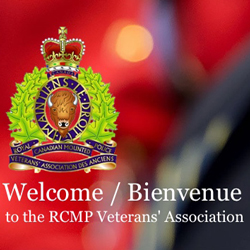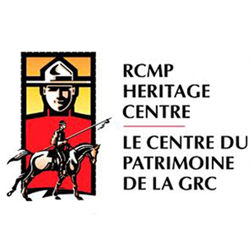John Stolarski’s Old Newspaper Clippings
With the exception of his first two years in the Force, John Stolarski spent his entire career as a Police Dog Services handler.
Throughout this career, John clipped newspaper articles about members who he had worked with.
Despite the fact that John has passed away, his family has agreed for us to re-post these articles for the interest of RCMP Veterans and current members of the Force.
MOUNTIES, DOG COMB COWICHAN FOR TWO SUSPECTS
November 14, 1974 (Colonists Newspaper) – DUNCAN RCMP tracking dogs brought from the mainland were aiding in the search last Thursday for a Duncan policeman’s revolver or any evidence leading to the identification of two young men who attacked him and fled with his gun late Wednesday.
Sgt. William Benedek (Reg.#18874), head of the Duncan RCMP detective division, was attacked while making a routine check of two young men just south of Duncan on the Trans-Canada Highway.
The men, described as being in their early 20s, were still at large and Staff Sgt. W. D. Gilchrist of the Duncan detachment feels they have left the area.
“The dogs from Burnaby and Chilliwack were brought in to aid another service dog from Nanaimo to find the missing gun or evidence,” he said.
The lone tracking dog from Nanaimo failed to locate the suspect early Thursday morning after they fled on foot through woods in the event they have hitch-hiked toward Alenby Road district.
The men were believed to be heading to Victoria before the incident occurred.
Benekek, the plain clothes policeman who was attacked, is back on the job although he still has pain in his back and groin.
“I was just making a routine check and they wouldn’t give me any identification,” Benedek explained. “So I returned to the car to get a support unit when one of them jumped me.”
Benedek said he was fighting one man when the other grabbed his service revolver from his hip holster and said, “Leave my buddy alone or I’ll blow your head off.”
A bag of marijuana and some liquid hashish were found near the scene.
“When you have a gun pointed at your head by some guy you don’t hassle him,” Benedek said, “so I told him to go his way and I would go mine.”
The other suspect ripped a radio microphone and a portable red light from the police car and both men fled on foot with the gun.
The missing gun is a .38 calibre, five-shot Smith and Wesson with RCMP stamped on its side.
Composite pictures of the suspects will be prepared today. RCMP were still waiting word on whether there were any fingerprints on the microphoen and light.
Police consider the men armed and dangerous ‘until such stime as we find that gun,’ Gilchrist said late Thursday.
NOTE: John’s scrape book has no followup article to indication if the two youth were identified and whether the service revolver was recovered.
POLICE OFFICER HONORED FOR RESCUE
March 10, 1976 – A Namaio RCMP officer credited with saving a man’s life received the Most Venerable Order of the Hospital of St. John of Jerusalem, Priory of Canadian Certificate, in a ceremony Tuesday at Nanaimo Detachment office.
Constable Cal Bodnarchuk answered a call Nov. 8 last year to local hotel where he found a man hanging. He gave the man artifical respiration and external heart massage, desite finding no heart beat. He revived the man prior to the ambulance arriving.
Attending the cermeony were, from left to right, Insp. Dan Webster, head of the Nanaimo Detachment, Constable Bodnarchuk, Mayor Frank Ney, Gordon Wagner from Island Ambulance and Staff Sgt. Major Boderud, from the Nanaimo Detachment.
GABRIOLA GRASS GROWS GREEN
RCMP Constable Mike Cain and Jack Ziebert, civilian employee at the Nanaimo police office, bundle 300 marijuana plants which were seized from two 12-foot square garden plots behind a home on Coho Drive, Gabriola Island the find and seizure were made on the weekend.
Police report eight other sites were found and plants confiscated. Value of the latest crop was estimated at $2,000.
Anyone convicted of cultivating marijuana is liable to a prison term of up to seven years.
FRANK KILNER WINDS UP LONG CAREER IN RCMP
1976 – A man who saw service in policing in British Columbia go from a provincial force to being under supervision of the RCMP retires June 26.
S/Sgt. Frank Kilner (Reg.#16608) joined the B.C. Polic July 25, 1949, being sworn in here in Nanaimo.
He had served time in the army – the Canadian Scottish – as a drummer and later as sergeant in the Canadian Provost Corps from 1939 to 1946.
He also spent some time working in the woods and doing various jobs, until he decided to join the police.
One of his earliest jobs was to work with the Doukhobors in the Grand Forks district.
“They were an interesting group… a contradiction of a number of things, between being both revolutionary and law-abiding,” he recalled.
Referring to the bombing of installations which was a common happening at the time, he said, “very few people were hurt, at least when I was there. The Doukhobors made sure there was no one around when they set dynamite to blow something up or set fire to places.”
“There was a protest against government interference with their lives. The bombings symbolized their objections.”
“They believed in what they were doing. They just didn’t want to become part of our society. The 20th century caught up with them. It was kind of sad.”
Later years of his service were spent in small communities, Part Alberni and later Zeballos for two years.
The Zeballos service covered an area from what is now Gold River to Cayuquot Sound. He patrolled it alone, mostly by airplane.
From 1953, he served three years in Chemainus and then four years in Powell River.
His most interesting service was in Vancouver, on the drug squad.
“The drug trade was pretty well confined to heroin and the police work was in close contact with the user or addict, “ S/Sgt. Kilner said.
But the attack on the drug scene was a two-proged one: The B.C. police worked on arresting the trafficker while the Vancouver city police attacked the user.
“We kept the street trafficking in control and the number of addicts around. The addicts were mostly small-time criminals.”
“Contrary to what many think, most of the big time traffickers were caught by the police and they served time,” he said.
LAX ATTITUDES
He said while the police supported by the public and strict control was kept upon the criminal element, the drug trade did not seem to grow.
“But when the courts allowed easy bail to the traffickers, then the effect the police investigations and their arrest within the syndicates were lost, because the next day the traffickers were back in business,” he said.
The same lax attitudes helped the spread of soft drugs such as marijuana and hashish, “which was glamorized by the various performers of the early 60s.”
“They galmorized it for a naïve, adolescent group who knew nothing about durgs compared with the young people of today. Those young people experimented with the soft drugs and then graduated to heroin use,” he said.
“This helped mushroomed the sales of heroin: The glamorization and permissiveness of the courts.”
“Up until a few years ago (drug use) was practically an epidemic, but the increased number of police and the harder line now taken seems to have brought some control,” S/Sgt. Kilner said.
As comparison, he siad when he was on the drug squad, he had 10 men while today the same work is being done by more than 100.
Part of the policeman’s work has been done through the media having provided publicity on the effects of drugs so the young people today, “are far better equipped to handle any glamorization of drug use.”
“These young people can’t be conned, especially here in Nanaimo.”
He credited two fellow officers, Mike Eastham and Ed Malinowski with “stamping out the large supply of heroin” in Nanaimo district, about 1974.
Referring to the relative quality of heroin over the years, he said when he was on drug squad, the average capsule was 30 percent pure, but today it is only 2 percent pure, at a cost of $50 a cap.
“The drug addict can get a lot more of a kick out of methodone today, that he can get for nothing, compared with the low purity heroin that’s being sold today,” he said.
S/Sgt. Kilner views the addict in the same light as many alcoholics – needing his shot to bolster his ego, either to himself or to his friends. For this reason both the addict and the alcholic are usually gregarious among their kind.
In 1972, he was transferred back to Powell River, on his request, serving there until being transferred to Nanaimo on July 1, 1974, as administrative NCO to replace retiring S/Sgt. Gib Perry who retired.
On reflection, he said his happiest periods of service were at Powell River, a small community where a great feeling of friendiness prevailed, while his most interest period was on the drug squad.
But perhaps the most significant is that he requested transfer to Nanaimo, where he knew he would retire.
NOTE: Frank Kilner passed away on February 21, 1997 at Nanaimo, BC.


 February 8, 2015
February 8, 2015 












